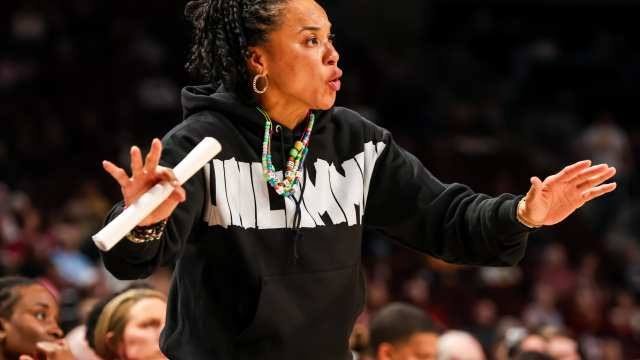AUSTIN, Texas — The streak is over — but South Carolina’s season is far from it.
The South Carolina women’s basketball team dropped its first SEC regular-season game since Dec. 30, 2021, falling 66-62 in a hard-fought battle against Texas. While the loss ends a remarkable conference run, it does not derail the Gamecocks’ bigger goals.
With five SEC games remaining, South Carolina (22-2, 10-1 SEC) still has the opportunity to clinch another SEC regular season title. Doing so would likely lock them into at least a No. 2 seed in the SEC Tournament, with a strong shot at securing the tournament championship. And, of course, their sights remain firmly set on the NCAA Tournament and a potential fourth national championship.
“The law of averages says at some point somebody is going to get you,” said Head Coach Dawn Staley. “I’m just glad they didn’t get us where we can’t survive. We still control our own destiny.”
Still, identifying a flaw is different from fixing it. While one close loss won’t redefine the Gamecocks’ identity, it did highlight a concerning pattern.
Both of South Carolina’s losses this season exposed a vulnerability in the paint. In November, UCLA’s Lauren Betts dominated with a double-double. On Sunday, it was Kyla Oldacre, whose commanding post presence rattled the Gamecocks down the stretch, scoring eight fourth-quarter points and forcing Staley to adjust her rotation.
“They used Oldacre to finish us,” Staley admitted. “She did a great job. She came through time and time again with crucial baskets.”
As a result, Chloe Kitts and Joyce Edwards didn’t see the court in the fourth quarter. Instead, Sania Feagin logged critical minutes due to her matchup capabilities.
Texas outscored South Carolina 40-26 in the paint and won the rebounding battle 42-35 — the second time in a month South Carolina was out-rebounded by a top SEC rival. Add in previous rebounding losses to LSU, Tennessee, and UCLA, and it’s clear this year’s roster struggles on the glass against elite opponents.
While South Carolina remains stacked with depth, plays stifling defense, and has a high-powered offense, the rebounding issue — amplified by Ashlyn Watkins’ season-ending injury — isn’t going away.
“We give up too much when Chloe or Joyce are on her,” Staley explained. “We could have tried Adhel Tac, but she’s just not experienced enough. [Oldacre] is a very experienced post player. I thought she brought it all home for them.”
There’s no miracle fix on the horizon. Watkins is out, and there’s no Kamilla Cardoso or Aliyah Boston waiting in the wings. South Carolina will need to scheme around this flaw if they hope to go the distance in March.
Another area that needs improvement? Guard efficiency. South Carolina’s guards shot a combined 10-of-35 (28.5%) from the field and missed six of the team’s eight free throws — a costly stat line in a four-point loss.
The defense wasn’t poor — 1.031 points per possession allowed is respectable — but it didn’t hit the elite level South Carolina showed earlier this season in wins over Texas and LSU.
One or two plays, one rotation tweak, and South Carolina might have left Austin with a win and a firm grip on the SEC race. But big picture? Little has changed.
With three weeks left in the regular season, South Carolina remains a serious contender for the national title. But at this point, they are who they are: an elite, championship-caliber team with one major weakness it must learn to navigate.



